13 November, 1999
Getting ready to go is hard work. Our science team has been preparing for
the expedition to Mt Erebus for several months back at New Mexico Tech.
Science equipment must be built or purchased, cleaned, repaired and packaged
for shipment. Supplies must be ordered and packaged, paperwork must be
completed. Getting ready for field science is a big job.
Now that we are in Antarctica, preparing to deploy into the field continues
to take many hands to do many jobs. Every detail must be checked and
double-checked. Once we are in the field there is no way to correct
mistakes. Here at Mcmurdo we must secure and pack all the equipment that
will make our lives comfortable on the volcano. If we forgot the toilet
paper, we do without. If we do not have enough food we will go hungry. If
we run out of batteries, our equipment won't work. We have been here a week
and there is still much packing to do. All 5 of the scientists on our team
work all day every day and into the evening as well. The time and efforts of
many people outside our team is also needed. Throughout the journal be
watching for jobs you might be interested in. Not everyone enjoying
Antarctica is a scientist.
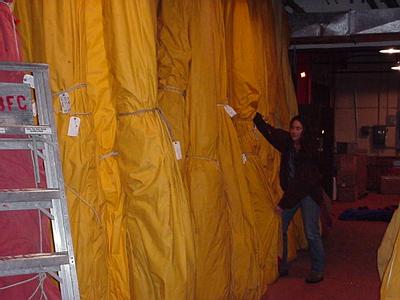
The large yellow tents are of the designed used by Robert Scott both in his Antarctic expedition of 1902-3 and his last and fatal journey to the South Pole in 1911. Read more about Robert Scott his life and his adventures at this web site: http://www.south-pole.com/p0000089.htm We will be living in these tents at our acclimation camp ( 9000 ft) on Fang Glacier. During survival training I and several other scientists learned how to erect these tents. See the pictures for the journal Nov 14, 1999. They are cozy to sleep in too.
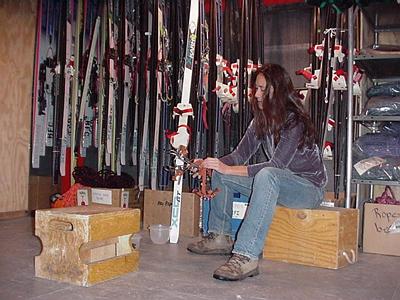
Up on the mountain the ground is covered with snow and ice. This makes walking around even in the bunny boots hard. Jean Wardell one of the geochemist scientists from New Mexico Tech and a seasoned researcher on Mt Erebus is getting crampons to fit her boots.
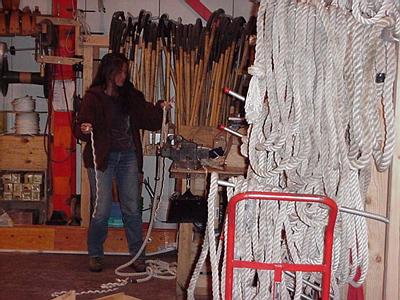
Ropes are an important safety item anywhere in Antarctica, but parcticularly up on the mountain. Walking around on glaciers can be dangerous and trekkers must be roped together to help prevent falls into unmarked crevasses. Here Jean is cutting small lengths of rope to make handles for our storage boxes.
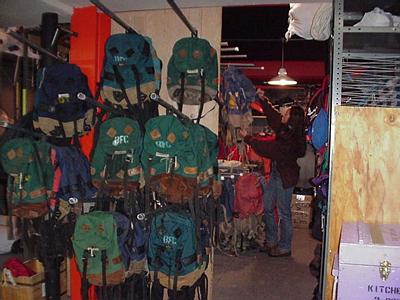
The daily routine of carrying equipment, radios, food and water around from test site to test site on the mountain requires good quality packs. Here Jean is selecting some of the packs we will need for the work on the mountain. Many of them are like the ones you carry your books around school in.
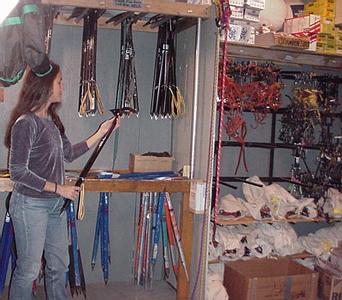
Ice axes, crampons and other safety gear are needed by each member of the expedition. Here Jean selects an ice ax that is right for her height.
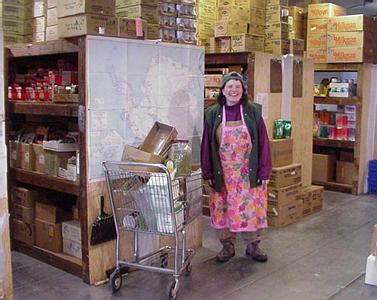
Staff member, Dawn, runs the "grocery store" for expeditions going into the field. Our group must pack enough food for 8 people for 6 weeks and have it ready for shipment to the volcano hut 2 days before we deploy. Dawn helps with this process. She is also in charge of deciding and purchasing the food field scientists will want, having enough on hand for all the teams for the entire season, and keeping track of what goes out and what comes back. A huge task anywhere, but in this remote place it is parcticularly difficult. If she runs out of something, the next closest store is 2000 miles away. She must like her job because this is her 6th season on the ice.
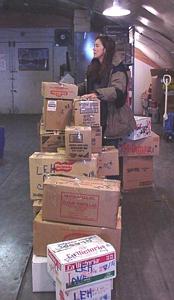
Here some of the food our group will need is packaged and ready to be taken to the helicopter pad for lift to the hut. We use small boxes because from the helicopter pad on the mountain to the hut is a walk and we have to hand carry them.
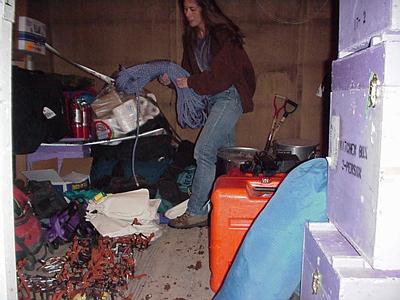
Each team is given a cage to gather and store our equipment until it is time to deploy. Everything you see must be packaged and taken to the helicopter pad 2 days before we fly to the mountain. Maybe then we can rest. It has taken the full time efforts of all 6 scientists and countless support personal 6 days to get this team ready to go.
Contact the TEA in the field at
.
If you cannot connect through your browser, copy the
TEA's e-mail address in the "To:" line of
your favorite e-mail package.
|
